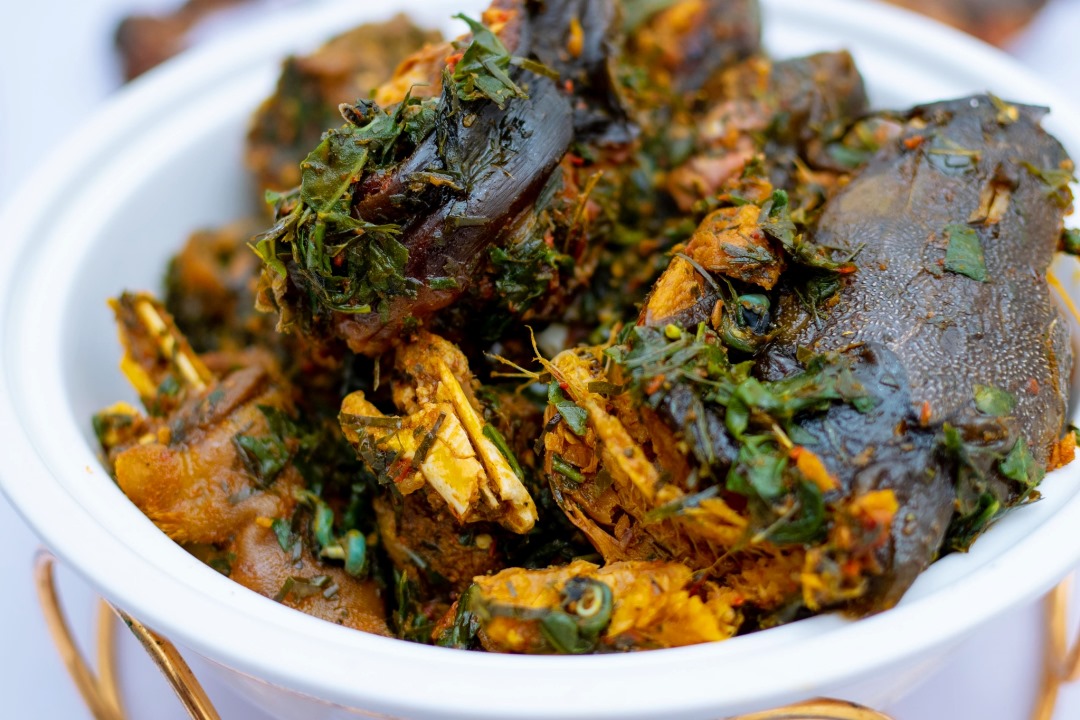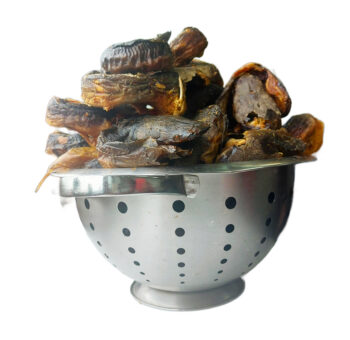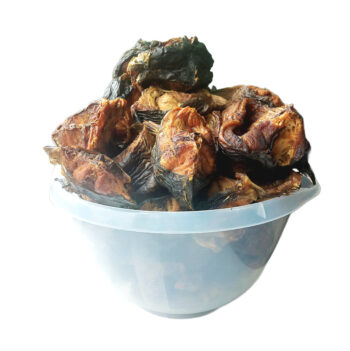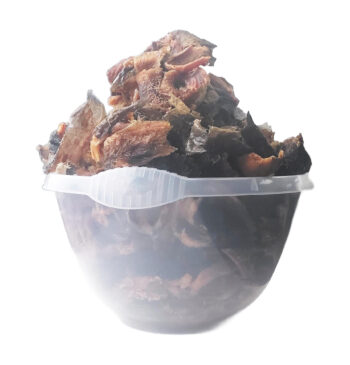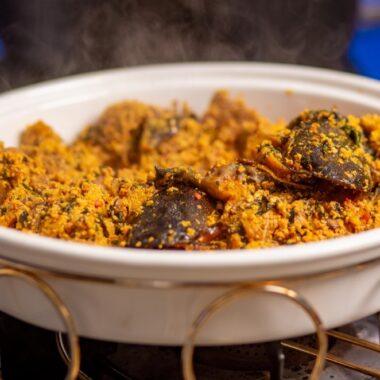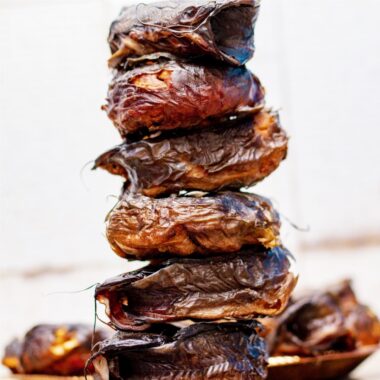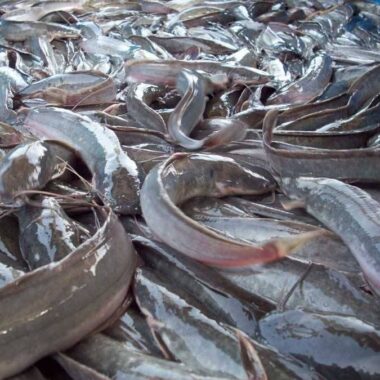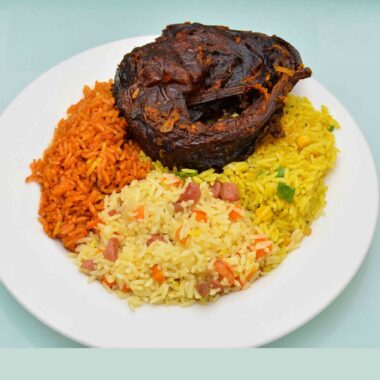A Culinary Tradition Rooted in History
Dried catfish has been a staple in African cuisine for centuries, valued for its rich smoky flavour, long shelf life, and high nutritional content. Across the continent, from the bustling markets of Nigeria, Ghana, Cameroon, and the Democratic Republic of Congo to the riverside villages of Uganda and Tanzania, dried catfish plays a crucial role in traditional meals. But how did this ingredient become essential in West African, Central African, and East African food cultures? Let’s explore its origins, significance, and lasting impact.
The Origins of Dried Catfish in Africa
The practice of drying and smoking fish dates back thousands of years, a method developed out of necessity to preserve food in regions with warm climates and abundant water bodies. Ancient African civilizations living along major rivers such as the Niger River, Congo River, and Volta River relied on dried fish as a key food source.
How Was Fish Dried in Ancient Africa?
There were three main methods used to preserve catfish:
- Sun-drying – Fish were gutted, salted, and left to dry under the hot African sun, a common practice in Sahelian and arid regions.
- Smoking – The most popular method, especially in West and Central Africa, where catfish were smoked over wood fires, infusing them with a deep, earthy aroma.
- Salting & Drying – Used in coastal areas where fish were salted before drying to enhance preservation.
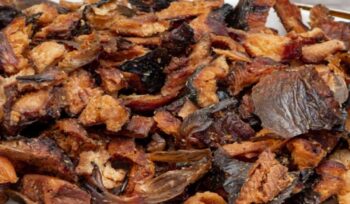
These preservation techniques allowed fish to be stored for months without refrigeration, making it a reliable food source for travelers, traders, and warriors.
Dried Catfish and Its Role in African Trade
Dried fish, including catfish, tilapia, and stockfish, became a highly valued commodity in early African trade networks. It was traded across West Africa, the Sahel, and even North Africa, reaching markets in Mali, Senegal, and Sudan. This trade played a major role in the expansion of African empires, such as the Songhai Empire and Mali Empire, where dried fish was a key dietary staple.
In addition, transatlantic trade routes later introduced dried fish to African diaspora communities in Brazil, the Caribbean, and the Southern United States, where it influenced local cooking traditions.
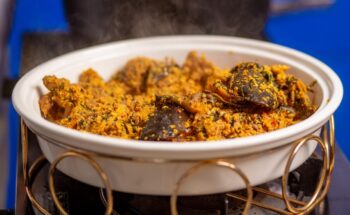
Cultural and Culinary Significance of Dried Catfish
West Africa: The Heart of Dried Catfish Cuisine
West African countries have a strong tradition of using dried fish in everyday cooking. Here are some iconic dishes featuring dried catfish:
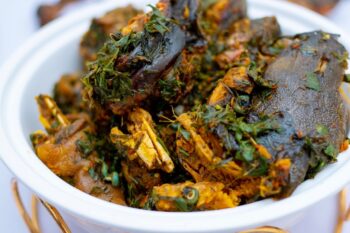
catfish
- Egusi Soup (Nigeria, Ghana, Cameroon) – A thick, hearty soup made with ground melon seeds, vegetables, and dried catfish, adding a deep, smoky flavour.
- Nsala Soup (Nigeria) – Also called white soup, this dish is traditionally made with dried catfish and uziza leaves for a distinctive peppery taste.
- Afang Soup (Nigeria) – A rich vegetable soup from the Efik and Ibibio people, with dried catfish enhancing its umami richness.
- Okro Soup (West Africa) – This slimy, nutritious soup often includes dried catfish for extra depth and protein.
- Eru Soup (Cameroon, Nigeria) – A favourite among the Cameroonian and Nigerian communities, using dried fish for added taste.
Central and East Africa: A Shared Love for Smoked Fish
Congo, Uganda, and Tanzania, dried fish is a major ingredient in local stews:
- Liboke (Congo, DRC) – A traditional smoked fish dish wrapped in banana leaves and slow-cooked.
- Sombe (Congo, Rwanda, Burundi) – A cassava leaf stew that often includes dried fish.
- Matoke (Uganda, Rwanda, Tanzania) – A plantain dish sometimes prepared with dried catfish for an extra layer of flavour.
Dried Catfish in Afro-Caribbean and Afro-American Cuisine
With the African diaspora, dried fish also influenced Caribbean and Southern American dishes, such as:
- Jamaican Run Down – A coconut-based fish stew, influenced by African cooking traditions.
- Gumbo (Louisiana, USA) – A famous Creole dish with African, French, and Spanish influences, often made with dried or smoked fish.

Why Dried Catfish Remains Popular Today
Dried catfish continues to be a cherished ingredient in traditional and modern African cuisine, both on the continent and among Africans living abroad.
Health & Nutritional Benefits of Dried Catfish
- High in protein – Essential for muscle growth and repair.
- Rich in Omega-3 fatty acids – Supports brain health and reduces inflammation.
- Packed with essential minerals – Calcium, phosphorus, and iron for strong bones and overall wellness.
Modern Uses of Dried Catfish
- As a base for soups, stews, and sauces.
- Added to rice dishes for an umami boost.
- Ground into fish powder for seasoning.
- Used in African fusion cuisine, combining traditional flavours with modern recipes.
Where to Buy Premium Dried Catfish in the UK & Nigeria
For those craving the authentic smoky, flavorful taste of dried catfish, Abori Fish delivers high-quality, oven-dried catfish with:
✅ Fast UK delivery (24 hours)
✅ Reliable Nigerian delivery (48 hours)
✅ Affordable pricing – Only £7.50 per pack!
📍 Order now at: www.aborifish.com
📲 WhatsApp: +447881524531
Dried catfish is more than just an ingredient—it connects to Africa’s rich culinary heritage. Whether you’re rediscovering childhood flavours or exploring something new, this timeless delicacy will always have a place on the table.

